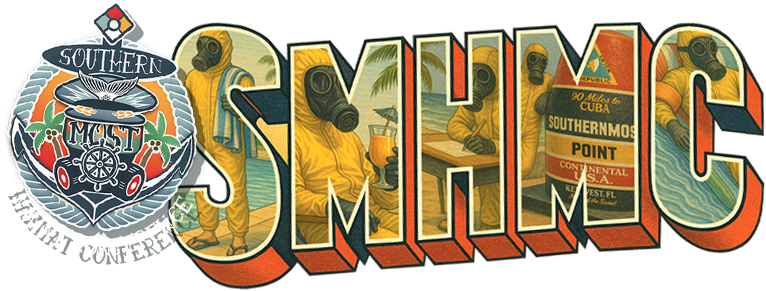When a Student Brings Radiation to School
It started like any typical recording with Mike and Bobby – some laughs, a little COVID vaccine banter, and Bobby’s signature “Hey everybody!” intro that he swears is still funny after 270 episodes (it is). But this time, they were digging into a scenario that’s equal parts fascinating and anxiety-inducing: a high school radiation scare.
Here’s the scene: a call comes in about a kid who supposedly brought radioactive material into a school. The building is being evacuated. The news is out. Emotions are high. And now it’s our job to figure out what the heck actually happened – and more importantly, what to do next.
First Thought: Is This Even Real?
One of the first things Bobby and Mike point out – and this is a great reminder for responders – is that schools don’t typically have radiation detectors lying around. So how did anyone even know there was radiation?
Turns out, the student had brought his own Geiger counter. He’d gotten it for Christmas and was testing objects around his house, including a chunk of vintage Fiesta dinnerware coated in uranium glaze. That reading kicked off the panic.
Mike put it plainly: “You can’t detect radiation unless you have the tools.” So when a school admin hears a Geiger counter clicking, the reaction is usually driven by fear, not facts. That ticking sound – the one we’ve all heard in movies – has become the boogeyman. It’s a psychological trigger, not an actual threat detector.
Priorities on Arrival: The Kid or the Classroom?
If you’re first on scene, where do you begin? According to Bobby, you start with the life. Always.
You’d want to find the student, get him alone (a bathroom often works), and scan him. Is there radiation on him (contamination)? Or was he just near a source (exposure)? That distinction matters.
“We’re not here to accuse a kid of wrongdoing,” Bobby said. “We’re trying to understand what he brought in and what the risks are.” He talked about building rapport – asking the kid what he brought, where he got it, and what it was made of. If he says smoke detectors, and your isotope detector shows americium, then hey, the story checks out.
If the kid’s clean – no radiation above background levels – you shift to the next task: find the source and evaluate the classroom.
Choosing Gear: Tyvek vs. Bunker Gear
Here’s where a little practical debate comes in. Bobby prefers Tyvek suits for ease and keeping his turnout gear uncontaminated. Mike leans toward bunker gear for its durability and simplicity, especially since there’s no fire or explosion risk in this case.
Both are reasonable. The important part is doing something that gives you a barrier in case of contamination, especially if you’re going to be up close with the source.
Understanding the Numbers: What Is “Dangerous”?
Once you find the object – let’s say it’s a broken shard of Fiesta plate – you start scanning. Bobby explained that the reading might come back as 30 microrems per hour above background, a level that’s interesting but far from alarming. The key detail? Distance.
“If I’m at the source and it’s 30 microrems, I’m not worried,” Bobby said. “But if I’m across the room and getting that reading, then we’ve got a different story.” Distance, as they both agreed, plays a huge role in understanding radiation safety.
As Mike joked, shielding might be the least effective tool in the average responder’s arsenal – unless you’ve got a “fat friend” to stand behind.
Explaining It to the Public Without Freaking Them Out
So you’ve got the kid scanned, the classroom checked, and the source identified. What now?
This is where the real work begins – talking to school staff, students, and maybe some panicked parents. Mike suggested walking the principal or head custodian through the classroom with your scanner, explaining in plain language what you’re seeing and what it means.
He even likened it to using a flashlight in a dark room: “When I turn the light off, the room goes dark again. Same thing with radiation. Remove the source, and it’s gone.”
Bobby went a step further and offered to come back for a school assembly if needed. That kind of community outreach isn’t just PR – it’s part of the job when it comes to rebuilding trust after a scare.
What Actually Happened: The News Article
At the end of the episode, Bobby read aloud the news story from NJ Pen, which confirmed their hunch. A high school student in Haddon Township, New Jersey, had brought a broken piece of Fiesta dinnerware to class. He’d gotten a Geiger counter for Christmas and wanted to show off how uranium oxide glaze could make it click.
Authorities responded, scanned, and cleared the area. Nothing above safe levels. No contamination. The student wasn’t trying to be reckless – he just loved science. Honestly, the kid sounded like a younger version of Mike or Bobby.
The Real Lessons from a Fake-Looking Scare
What I loved most about this conversation is how it mixed street-level smarts with scientific know-how. Radiation is scary to people, even though it’s everywhere – literally in the air we breathe, the walls around us, and the food we eat. But that fear doesn’t mean it’s always a hazard.
When responders show up calm, prepared, and ready to explain things in normal language, it changes everything. This story wasn’t about a meltdown or malicious intent. It was about how we react – especially when it involves kids, schools, and the word “radioactive.”
And that’s where Mike and Bobby shine. They walk us through the technical side without losing the human element. Because being good at hazmat is about more than tools – it’s about trust, communication, and understanding when something’s real, and when it’s just a Geiger counter on Christmas morning.


